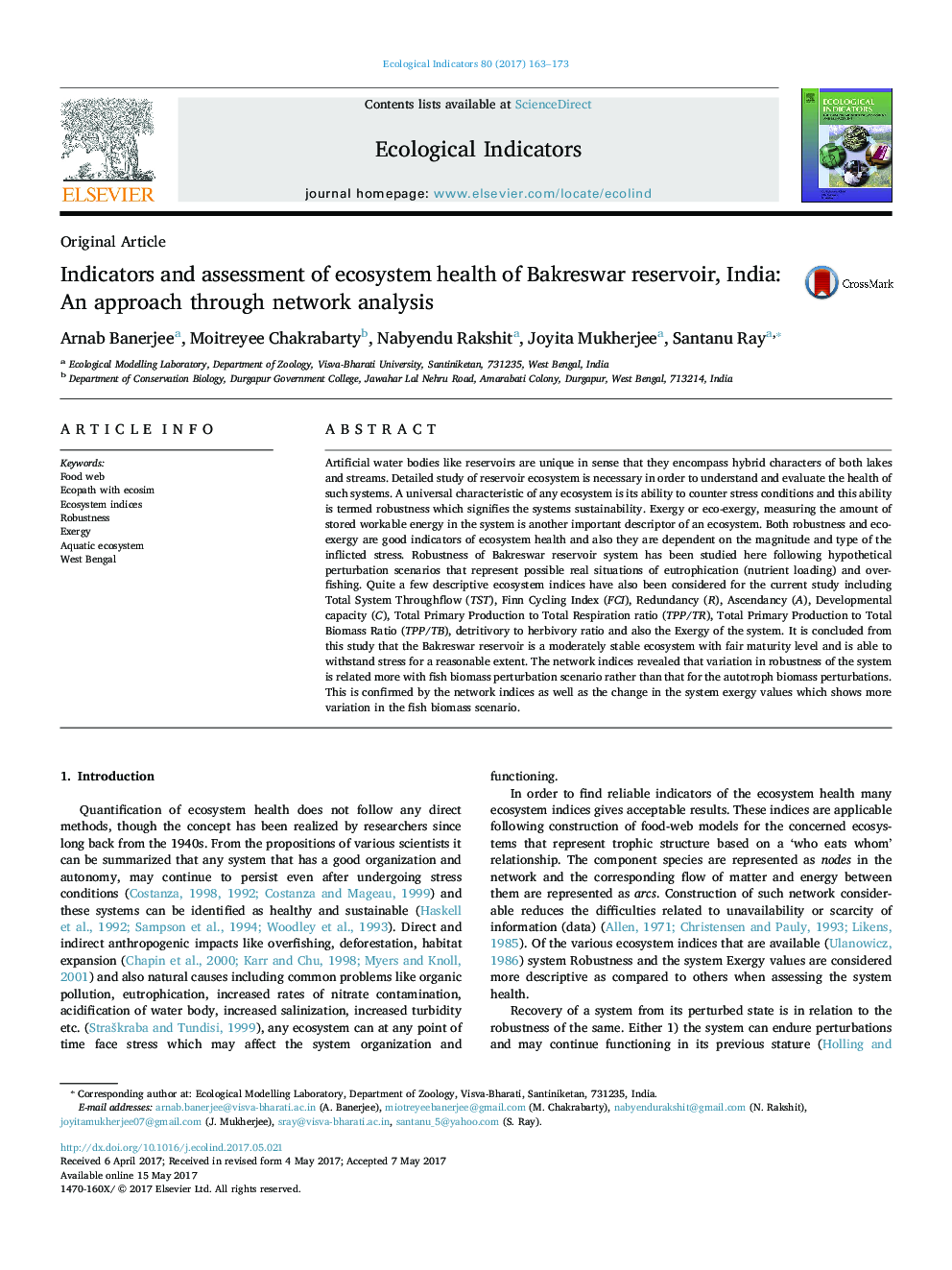| Article ID | Journal | Published Year | Pages | File Type |
|---|---|---|---|---|
| 5741378 | Ecological Indicators | 2017 | 11 Pages |
â¢Robustness and exergy are chosen as suitable indicators of ecosystem health of Bakreswar reservoir.â¢System variations are observed following two hypothetical perturbation scenarios.â¢Perturbation scenarios include fish and autotroph biomass changes.â¢Both robustness and eco exergy values are observed to change with the perturbations.â¢Response of these indicators are descriptive of ecosystem health.
Artificial water bodies like reservoirs are unique in sense that they encompass hybrid characters of both lakes and streams. Detailed study of reservoir ecosystem is necessary in order to understand and evaluate the health of such systems. A universal characteristic of any ecosystem is its ability to counter stress conditions and this ability is termed robustness which signifies the systems sustainability. Exergy or eco-exergy, measuring the amount of stored workable energy in the system is another important descriptor of an ecosystem. Both robustness and eco-exergy are good indicators of ecosystem health and also they are dependent on the magnitude and type of the inflicted stress. Robustness of Bakreswar reservoir system has been studied here following hypothetical perturbation scenarios that represent possible real situations of eutrophication (nutrient loading) and overfishing. Quite a few descriptive ecosystem indices have also been considered for the current study including Total System Throughflow (TST), Finn Cycling Index (FCI), Redundancy (R), Ascendancy (A), Developmental capacity (C), Total Primary Production to Total Respiration ratio (TPP/TR), Total Primary Production to Total Biomass Ratio (TPP/TB), detritivory to herbivory ratio and also the Exergy of the system. It is concluded from this study that the Bakreswar reservoir is a moderately stable ecosystem with fair maturity level and is able to withstand stress for a reasonable extent. The network indices revealed that variation in robustness of the system is related more with fish biomass perturbation scenario rather than that for the autotroph biomass perturbations. This is confirmed by the network indices as well as the change in the system exergy values which shows more variation in the fish biomass scenario.
